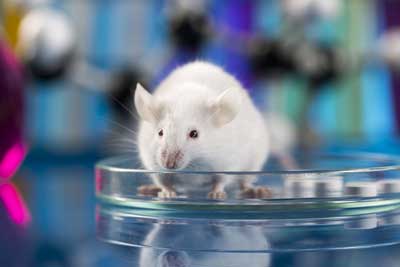- Advertising
- Bare Metal
- Bare Metal Cloud
- Benchmarks
- Big Data Benchmarks
- Big Data Experts Interviews
- Big Data Technologies
- Big Data Use Cases
- Big Data Week
- Cloud
- Data Lake as a Service
- Databases
- Dedicated Servers
- Disaster Recovery
- Features
- Fun
- GoTech World
- Hadoop
- Healthcare
- Industry Standards
- Insurance
- Linux
- News
- NoSQL
- Online Retail
- People of Bigstep
- Performance for Big Data Apps
- Press
- Press Corner
- Security
- Tech Trends
- Tutorial
- What is Big Data
Could Big Data Spell the End of Animal Testing in Biomedical Research?


The use of animals in biomedical, cosmetic, and military research affects 100 million dogs, cats, rabbits, mice, and primates, each year.
Scientists say animal testing is a crucial part of research. Opponents say these activities are unnecessary and the test subjects are housed in inhumane conditions.
Pharmaceutical companies are required by the FDA to test on animals as part of the drug approval process. Yet animal rights advocates insist this is vivisection. This debate has been raging for decades but things may be finally looking up for lab animals.
The growth of big data analytics has real possibilities for replacing animal testing with scientific models that may finally quell the debate forever.

Data models can lessen pain and suffering in the lab.
Animal Testing - Necessary and Controversial
Most scientists agree that animal testing is sometimes necessary to ensure the safety of a new medication. Animals have traditionally been infected with diseases, poisoned for toxicity testing, and many other invasive, painful procedures.
The majority of these tests have a documented benefit for human beings. The controversy stems, in part, from hundreds of violations of the Animal Welfare Act by some of the most respected research institutions in the country.
It’s true that organizations in the scientific community have made great strides over the last 20 years in reducing the need for animal testing. The California Biomedical Research Association, along with others in the research community agree that alternatives to animal testing include:
- Math and computer models
- Culture and cell tests
- Shared data between labs
- Advanced analytics
With the rise of big data analytics, there is an even greater potential for reducing the need for animal testing.
Non-Living Data Models
Large open source data platforms and advances in machine learning have allowed us to parse and analyze data in new ways. Virtual animal models are replacing what Lab Manager calls “outmoded animal tests.”
High-performance cloud computing has provided an unparalleled opportunity to share data sets between labs. Data can be analyzed more quickly which might speed up the biomedical process, lessening testing time and stress for animal subjects.
Big data apps in the Internet of Things (IoT) have created additional alternatives. For long-term studies, animals could be potentially returned to a more natural environment with a wearable device tracking the impact of a particular drug.
Data analytics is being applied in a new way across MEDLINE scientific research. A new algorithm dumps the traditional BOOLEAN search for sophisticated analytics that finds key correlations between data.
Scientists have developed a way to test drugs without using a test subject. Inc. reported that “organs-on-chips,” a tiny computer chip, could mirror the cell makeup of human beings. The drug can be injected into the chip to track human reactions such as heartbeat and blood pressure.
These are a few of the applications signaling that big data will offer effective alternatives to the use of living creatures in biomedical testing. It’s visionary thinking that paints a long-term picture of empty laboratory cages. That’s something animal rights advocates, data analysts, and biomedical researchers can agree with.
To learn more about how big data is changing research, contact us.
Readers also enjoyed:



Leave a Reply
Your email address will not be published.